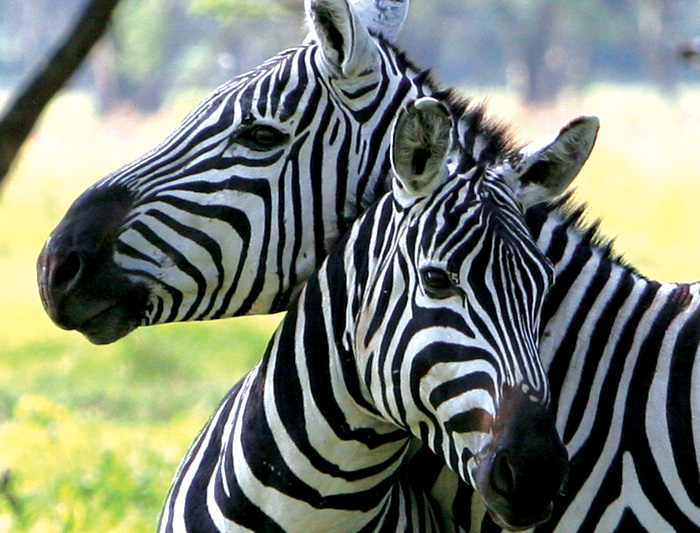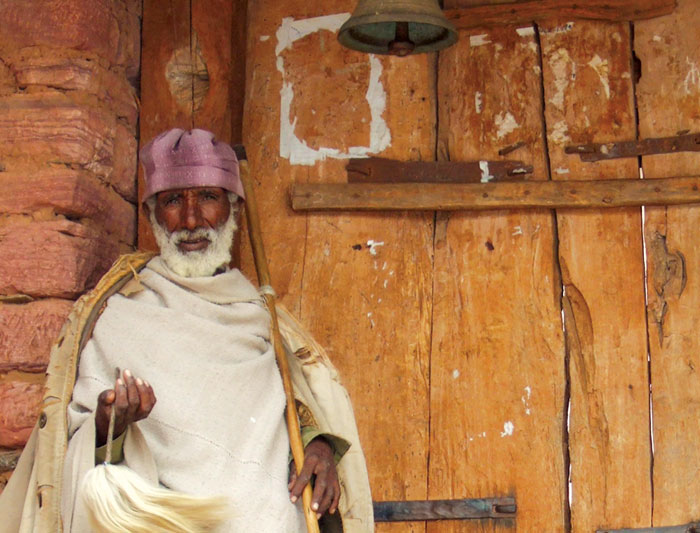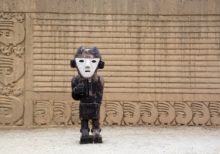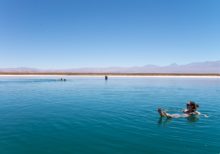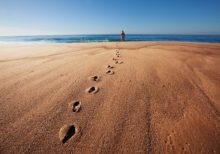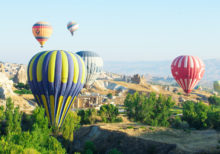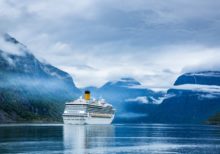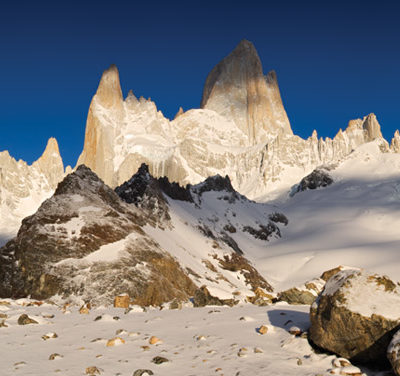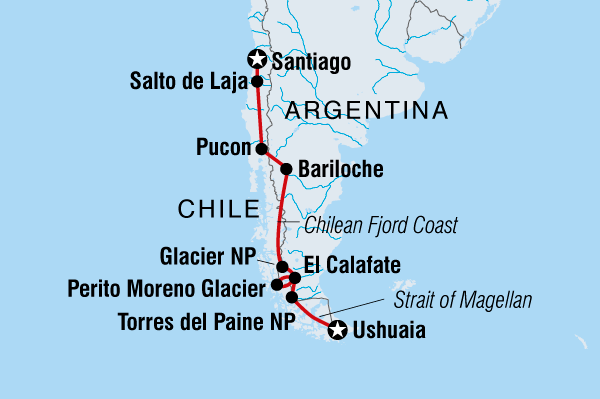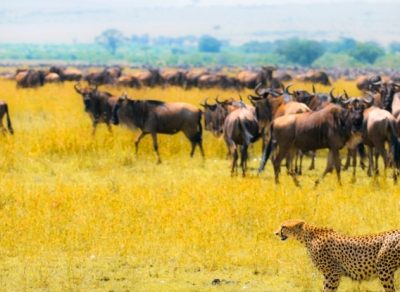| Starts | Addis Ababa, Ethiopia |
|---|---|
| Ends | Nairobi, Kenya |
| Region | Ethiopia |
| Duration | 24 days |
| Tour Operator | Intrepid Travel |
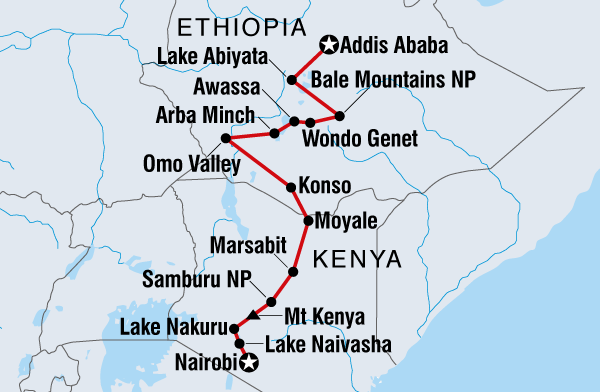
Itinerary
Day 1 - Starting: Addis Ababa & Finishing: Addis Ababa
Border Information: If joining in Addis Ababa, you will most likely enter Ethiopia at Addis Ababa Bole International Airport. There will be a group meeting at the joining hotel at 6:00pm. Please look out for a note from your tour leader at the reception when you arrive giving more details about this important meeting. The rest of the day before this meeting will be free to explore Addis Ababa and visit the city's many museums - we recommend that you arrive early (or the night before) if you would like the chance to fully explore the sights of Addis Ababa. In Addis Ababa we will stay in a comfortable hotel with good facilities. Hotel for the night: sarem-international-hotel Sarem International Hotel Belay Zeleke Street (around Semien Mazegaja) Addis Ababa Ethiopia Tel: +251 11 126 2088/99 Activity Approximate Cost Visit "Lucy", one of the oldest complete hominid skeletons ever found, at the National Museum ETB 10 Stroll through the Addis Ababa Mercato, one of the largest markets in Africa Free Visit Africa Hall, a symbol of African independence and optimism Free Visit the St. George's Cathedral (Giorgis Cathedral), built to commemorate Ethiopia's victory over the Italians in 1896 Free
Day 2 - Starting: Lake Abiyata & Finishing: Lake Abiyata
Activity Approximate Cost Visit the Menelik Mausoleum, built to serve as the tombs of emperors and princes Free Explore the fascinating Ethnological Museum, one of the best museums in Africa set in a former palace of Haile Selassie ETB 100 About Addis Ababa: Referred to more commonly as "Addis", Addis Ababa (220 km, approx 7-8 hours) lies amongst wooded hills at an altitude of about 2300 metres, giving it a pleasant climate. Addis has many sights to offer visitors and we have free time to explore the sites. Get a fascinating glimpse into Ethiopia's many tribal groups at the Ethnological Museum, see the stunning fossil collection at the National Museum, and don't miss the chaotic bustle of the Merkato (local market). All manner of arts and crafts can be found in the souvenir shops on Churchill Avenue. Today we will leave Addis Ababa and head to the small town of Ziway. After lunch we will take a boat tour across Lake Ziway to Tulu Gudo Island, where we will have a short guided tour of the ancient monastery there and view some of the old religious manuscripts. In Ziway we will stay in a small local hotel. Estimated Drive Time - 4 hours (please note that all drive times given here are approximate estimates only and are given with the best intentions - however please be aware that the drive times are heavily dependent on traffic, road conditions, weather, police roadblocks, and many other factors - flexibility is essential on any overland trip!). Activity Approximate Cost Take a boat trip across Lake Ziway to Tulu Gudo Island, and explore the old Coptic monastery on the island Included in Kitty About Lake Ziway: Lake Ziway, about 60 miles south of Addis Ababa, and its surrounding area, nurtures an array of wildlife. Birds, hippopotamuses and fish roam the lake, which is dotted with five islands. One of the islands, Tulo Gudo, is said to have housed the Ark of the Covenant in the ninth century. Long inhabited by the Gurage, an ethnic group rich in history and culture, the areas surrounding the lake are now under unprecedented pressure from deforestation.
Day 3-5 - Starting: Bale Mountains National Park & Finishing: Bale Mountains National Park
Today we will leave Ziway and drive to the stunning Bale Mountains National Park. Estimated Drive Time - 8 hours. We will enjoy 2 full days to explore the National Park. We will keep one day completely free to head out for guided walks - there are several possibilities for routes, including highland routes up the hills and moorlands searching formountain nyalas, or lowland walks through the forest areas to look for Bale monkeys! On the other day we will drive in the truck up to the Sanetti Plateau, all the way to the second-highest point in Ethiopia (the summit of Tulu Dimtu) to explore the primeval landscape and search for Ethiopian wolves. In the Bale Mountains we will stay in dorms in a basic lodge near the entrance to the National Park. Activity Approximate Cost Various walks through the forests, moors, and mountains of the beautiful Bale Mountains National Park Included in Kitty About Bale Mountains National Park: Bale Mountains National Park is situated on a high plateau surrounded by mountain peaks which soar to over 4000 metres in height. As you climb into the hills the terrain changes from forest on the lower slopes through junipers and heather to the exotic moorlands of the plateau, criss-crossed by fast-flowing streams. This beautiful park is home to three species unique to Ethiopia; the Simien red fox, Menelik's Bushbuck and the Mountain Nyala. There are some 200 species of bird within the park including 13 of Ethiopia's 23 endemic species.
Day 6-7 - Starting: Wondo Genet & Awassa & Finishing: Wondo Genet & Awassa
Today we will head north to the small town of Awassa, where we will visit the Awassa Children's Project in the afternoon. This is a home for local children orphaned by the HIV epidemic, and we will be shown around and see how public donations and the support of Dragoman goes towards feeding, sheltering and educating the children. After our visit we will head to Wendo Genet, a small town in the hills above Awassa, where we will stay for the 2 nights. Estimated Drive Time - 7-8 hours. We will have a a free day to explore the region, go on an optional walk to some nearby waterfalls, and take a dip in the nearby hot springs. In Wendo Genet we will camp in the grounds of a small local hotel. Activity Approximate Cost Visit the Dragoman-supported Awassa Children's Project, a home for orphaned children from the area Included in Kitty Relax in the hot springs at Wendo Genet Included in Kitty Head out on a short walk to the waterfalls near Wendo Genet ETB 100 About Awassa: Awassa (also spelled Awasa or Hawassa) is a city in Ethiopia, on the shores of Lake Awassa in the Great Rift Valley where fishing is it major local industry. Awassa was capital of the former Sidamo Province from about 1978 until the province was abolished with the adoption of the 1995 Constitution. This city is home to Hawassa University, Awasa Adventist College, and a major market. Important local attractions include the St. Gabriel Church and the Awassa Kenema Stadium. During our time in Awassa we will visit the Awassa Childrens Project. The Awassa Children's Project promotes sensible, culturally responsible relief work aimed at assisting children primarily orphaned by AIDS, educating people in Africa's Sub-Saharan region about AIDS prevention, and offering a proactive and immediate approach towards the resolution of serious health and social issues facing the region. The Awassa Children’s Project (ACP) is a grassroots non-profit organization formed in 2001. ACP supports several organizations in Awassa, Ethiopia: a children’s centre that provides housing, food and education for over 60 children orphaned by AIDS; One Love Theatre (OLT), an AIDS education theatre company; and the Awassa Youth Campus, a community center in downtown Awassa which features–free to all Awassa children–aikido, sports, tutoring, art, music and a library, among other activities. These organizations continue to grow and dramatically improve the lives of Awassa children and the community in which they live. Especially in these times of dramatically increasing food costs in Ethiopia, your support is critical to our continued success. For further information on the project please go to http://www.awassachildrensproject.org/ About Wendo Genet : Wendo Genet (also known as Wondo Genet) is a resort town in Ethiopia. Located southeast of Shashemene in the Sidama Zone of the Southern Nations. Wendo Genet is known for its hot springs and is surrounded by primary Ethiopian forests. The Wendo Genet hotel was established in 1964, on land used as recreation site for the royal family until 1975. Emperor Haile Selassie bequeathed its name, meaning "Wondo Paradise", in reference to the beautiful panorama with a rich endowment of forests, wildlife and abundant water
Day 8-9 - Starting: Arba Minch & Finishing: Arba Minch
Today we will travel to the town of Arba Minch, a small town overlooking Lake Chamo. Estimated Drive Time - 9-10 hours. The next day, we will have a free day for some well-earned rest after the Omo Valley, or to take an optional boat trip on Lake Chamo to the view the crocodiles that reside there, or hire bicycles to explore the scenic area. In Arba Minch we will stay in a basic local hotel. Activity Approximate Cost Take a boat trip on Lake Chamo, a stunning lake with a dense population of crocodiles ETB 450 Visit the fascinating village of Chincha to learn all about the culture of the Dorze people ETB 100 Hire bicycles to explore the stunning surrounds of Arba Minch ETB 200 About Arba Minch: Meaning 'forty springs', Arba Minch takes its name from the streams found between the two Rift Valley lakes of Abaya and Chamo. The town has stunning views over the lakes and surrounding forested areas, and also has an excellent and vibrant market. Lake Chamo National Park is home to what the locals refer to as the 'crocodile market'. This is a place on the shores of the lake where vast numbers of crocs congregate, some of which reach over seven metres in length. The lake is home to the Guji and Ganjule people who traditionally hunt hippos and are famed for their 'ambatch boats', which resemble the boats carved in the tombs of the ancient Egyptians
Day 10-13 - Starting: Omo Valley Region & Finishing: Omo Valley Region
Over the next 4 days/3 nights we will be exploring the remote and rarelyvisited tribal areas of the Omo Valley in southern Ethiopia. We will keep these days on a flexible itinerary so that we can react to news of special events being hosted by particular villages or tribes; as such, we cannot provide an exact itinerary for these days. However, we will aim to visit various tribal villages in the area, such as villages of the Hamer, the Mursi and the Konso tribes. We will camp in basic campsites on all these nights without possibility of upgrades, and we try to spend at least one of the nights camping in one of the tribal villages (this is not guaranteed to be possible on every trip). Drive times - 4-9 hours each day. Please note that we will be travelling through very remote areas with rough roads and basic conditions on these days. Please also note that it is absolutely vital that you follow your tour leader's directions regarding responsible tourism in these regions, especially with regards to giving things away for free and taking photographs of the locals. Activity Approximate Cost Journey through the remote Omo Valley, visiting several tribal communities along the way (possibly including the Hamer, Banna, Mursi, Ari, Konso or Danesesch tribes) Included in Kitty About Omo Valley Region: The Omo Valley region is unusual in that it is home to so many different tribes all living very close to one another in such a small area. Anthropologists believe that this is because thousands of years ago this area of Africa acted as a kind of ethnic crossroads, as different groups of people migrated between north, south, east and west Exploring the many small communities and settlements here will give you a fascinating insight into the different tribes, their cultures, traditions and way of life. On Dragoman trips we travel with a local guide, who will be able to introduce us to the Hamer, Arbore and the Dascensch tribes, among others. There are also other tribal groupings throughout the area and our guide will point out the different tribes and their customs. Life is distinctly tribal throughout the region, with few modern amenities.
Day 14 - Starting: Konso & Finishing: Konso
Today we will arrive in the town of Konso, marking the end of our time in the Omo Valley region. In Konso we will camp in the grounds of a basic lodge. If we have made good time and do not wish to stay in Konso, we may choose to push on to wild camp at Sode Crater, giving us a chance for some short walks in the morning before crossing the Kenyan border. About Konso: In the far south of Ethiopia on the banks of the Sagan river is Konso, gateway to the Omo Valley. The whole way of life in the villages here has changed little over the centuries and old traditions are strongly upheld.
Day 15 - Starting: Moyale & Finishing: Moyale
Border Information: Exit Ethiopia at Moyale, enter Kenya at Moyale. Today we have a full drive day across the Kenyan border at Moyale, where we will camp at the town's police station or in a local campsite. Estimated Drive Time - 9-10 hours. About Moyale: The market town of Moyale splits the countries of Kenya and Ethiopia. There is a nice atmosphere that runs throughout the town and more of this can be discovered through exploring.
Day 16 - Starting: Marsabit & Finishing: Marsabit
Over the next two days we will be travelling through the very rarely-visited region of northern Kenya, crossing the infamous Moyale-Marsabit road to the central Samburu region. Both days will be fairly long hard driving, and the road can be incredibly bumpy and challenging, but scenery makes up for this as we travel through the black lunar landscapes near Marsabit and pass mountain greenery, spectacular craters, watercourses, bush country and termite mounds. On the first day of our journey, we will reach the town of Marsabit and will stay in a basic local hotel with shared bathrooms. Estimated Drive Time - 9-12 hours (highly dependant on weather conditions) Please note that due to security issues in this particular area, we will be accompanied by two armed police escorts between Moyale and Archer's Post. Activity Approximate Cost Visit and stay at the Samburu tribal community and cultural project, learning all about the culture of the Samburu people Included in Kitty About Marsabit: Marsabit lies on the extinct volcano of Mount Marsabit. Surrounded by forests on the hills, it is a contrasting image to the deserts in the background. At the heart of the forest is Lake Paradise. This gorgeous site attracts animals such as elephants and buffaloes to the spot and this and the Bongole Crater create a fascinating location for people all over to come and gaze at the beauty of the town. About Samburu community village visit: We stay at a Samburu village just outside the Samburu National Reserve. Similar in appearance to the Maasai but less known, the Samburu are a proud warrior tribe. Here we watch traditional Samburu dancing, and learn about Samburu tribal life and customs. The project is run by Samburu tribesmen for the benefit of the community.
Day 17-18 - Starting: Samburu National Reserve & Finishing: Samburu National Reserve
Today we will get up early and enter the Samburu National Reserve, where we will head out for the entire day for game drives in the truck (breaking for a long lunch during the heat of the day). Samburu is a stunning National Reserve and is a great opportunity to spot big game such as cheetah, leopards, lions, and buffalo. The Reserve is also home to other animals rarely seen in the National Parks further south, such as Grevy's zebras, Somali ostriches and gerenuk ('giraffe-necked antelopes'). Tonight we will wild camp in a camping area in the National Reserve - facilities are very basic, but the area is a 5-10 minute walk from Samburu Lodge. Please note that during very wet conditions we may need to use locally chartered 4x4 jeeps rather than our truck to get a good game drive in - in this instance we may make this option available at extra cost. Activity Approximate Cost Head out for a wildlife safari in our overland truck through the Samburu National Reserve, in search of local wildlife including gerenuk and Grevy's zebra Included in Kitty About Samburu National Reserve: The Samburu region has hardly been touched by tourism and its pristine wilderness is home to a fascinating mix of Kenya's nomadic tribes who still retain traditional ways of life. These tribes include the Samburu, Rendille, Turkana, and Kalenjin. The Samburu National Reserve is famous for its reticulated giraffes, Grevy's zebras, graceful gerenuks, and Beisa oryx, whilst crocodiles are often seen in the river. If we are lucky, we may also see lions or leopards here. The Ewaso Nyiro River meanders through the reserve forming a ribbon of oases in the parched landscape. We will visit the Samburu Cultural Centre outside Samburu National Reserve. Similar in appearance to the Maasai but lesser known, the Samburu are a proud warrior tribe. Here we watch traditional Samburu dancing, and learn about Samburu tribal life and customs. The project is run by Samburu tribesmen for the benefit of the community.
Day 19-20 - Starting: Naro Moru & Finishing: Naro Moru
Today we will exit the Samburu National Reserve via a final game drive, to arrive at the small village of Naro Moru at the base of Mount Kenya. Estimated Drive Time - 5-6 hours. On the next day, we will have a free day in Naro Moru to take optional walks around the lower slopes of Mount Kenya, explore the nearby Mau Mau caves, or take an optional game drive in the nearby Sweetwaters National Reserve. In Naro Moru we will stay at a well equipped campsite. Activity Approximate Cost Head out horse riding in the forests around Naro Moru KES 1000 Nature walks around the base of Mt. Kenya, searching for birdlife and Colobus monkeys USD 15 Game driving in the wildlife-packed private reserve of Ol Pejeta Conservancy and Sweetwaters Game Reserve USD 190 Guided walk to the Nayaroi Caves in the foothills of Mt. Kenya, used by the Mau Mau during the rebellion against British colonial rule KES 1000
Day 21-22 - Starting: Nakuru National Park & Finishing: Nakuru National Park
Today we will head through the hills of central Kenya, through the area's beautiful scenery and tea plantations, to arrive at Nakuru. If we make good time on the drive we may have the opportunity to take a walk around the working dairy farm where our campsite is, and to visit a local women's knitting collective. Estimated Drive Time - 7 hours. On the next day, we head into Nakuru National Park for an included full-day game drive in local safari trucks. Nakuru is a beautiful park with a large lake and many forested areas - it is teeming with wildlife and there is an excellent chance to see both black and white rhinos! In Nakuru we will stay at a beautiful and well equipped campsite located on a dairy farm on the outskirts of Nakuru town. Activity Approximate Cost Walk to explore a colonial dairy farm and visit a local women's knitting collective USD 5 Take a safari in 4x4 vans in the beautiful Lake Nakuru National Park Included in Kitty About Nakuru National Park: Lake Nakuru National Park was established in 1968 to protect the huge flocks of lesser and greater flamingos that live here. At times there are over one million of these spectacular birds roaming around the acrid waters of the soda lake that is the centrepiece of the park. Even if you are not a keen birdwatcher the sight is inspiring and it is not hard to understand why the lake has become such a favourite for African wildlife documentaries. Nakuru is also where much of the film "Out of Africa" was shot. The park is located on the floor of the Rift Valley and is a mixture of bushland, forest and rocky escarpment. Each area is an important habitat for many different species of wildlife. Besides the prolific birdlife, the park is also well established as one of East Africa's premier parks for big game. Beside the lake, hippo, waterbuck, warthogs, Bohor's reedbuck and zebra can regularly be found. Further up in the forests there's a large population of black and white colobus monkeys; and the ultimate forest predator, the leopard. The bushland on the valley floor is home to a large variety of antelope and gazelle including eland, impala, Chandler's reedbuck and the tiny dikdik; and the inevitable pride of lions.You can also see Rothschild giraffe here, but Nakuru's biggest draw is probably it's rhinos. In the late 1980s the Kenyan Wildlife Services used the park as a rhino sanctuary, and it now has a stable black and white rhino population.
Day 23 - Starting: Lake Naivasha & Finishing: Lake Naivasha
Today we make our way to Lake Naivasha, a beautiful calm lake in the Great Rift Valley. Here we will have the chance to take an optional boat trip on the lake to spot hippos and African fish eagles, and also to visit the Elsamere Born Free Foundation at the old home of Joy Adamson. In Naivasha we stay at a well equipped campsite on the lake shore. Estimated Drive Time - 3 hours. Activity Approximate Cost Boat trip on the beautiful and serene Lake Naivasha (price for the whole boat) KES 7000 Walking safari in the wildlife-rich Crater Lake Game Sanctuary USD 40 Visit the Elsamere Born Free Foundation at the former house of the conservationists Joy and George Adamson Included in Kitty Explore the beautiful landscape and wildlife of Hell's Gate National Park by foot or by bicycle USD 50 About Naivasha: On the shores of Lake Naivasha lies the market town of Naivasha. Here, there are a wide variety of birds to view in and around the lake, and hippos are usually seen wallowing along the shores. There is an option here to take an afternoon boat trip along the scenic shallow waters for a closer look at these creatures as well as many other ways to spend your time in this park.
Day 24 - Starting: Nairobi & Finishing: Nairobi
Border Information: If you are finishing in Nairobi, you will most likely exit Kenya at Nairobi Jomo Kenyatta International Airport. This morning we will have some free time in Naivasha to relax at the lake, go on an optional early walk in the Crescent Lake Wildlife Sanctuary or hire bicycles to explore the nearby Hell's Gate National Park! After lunch we will make our way to the Kenyan capital of Nairobi. We expect to arrive back in Nairobi around 4pm in the afternoon. On arrival in Nairobi you will be dropped at our finishing point hotel. No accommodation is provided for tonight, but we are able to book you additional accommodation in Nairobi. Please ask at time of booking. If you would like to explore Nairobi fully, we advise you spending an extra night here. Possible activities include visiting the Karen Blixen Museum, the National Museum and the Langata Giraffe Centre. Please do not book flights out of Nairobi for later than 8:00pm. Estimated Drive Time - 3 hours. About Nairobi: Nairobi is a lively city with a cosmopolitan atmosphere. The Kenyan capital takes it's name from the Maasai meaning 'Place of Cool Waters'. Today it is a busy, bustling place that comes alive through it's many markets, shops, bars and restaurants, not to mention it's vibrant nightlife. If you have time to explore the city, the National Museum of Kenya and Karen Blixen Museum are both worth a visit, or you can get up close to the Giraffe's and help to feed them at the Langata Giraffe Centre.
View Dates

